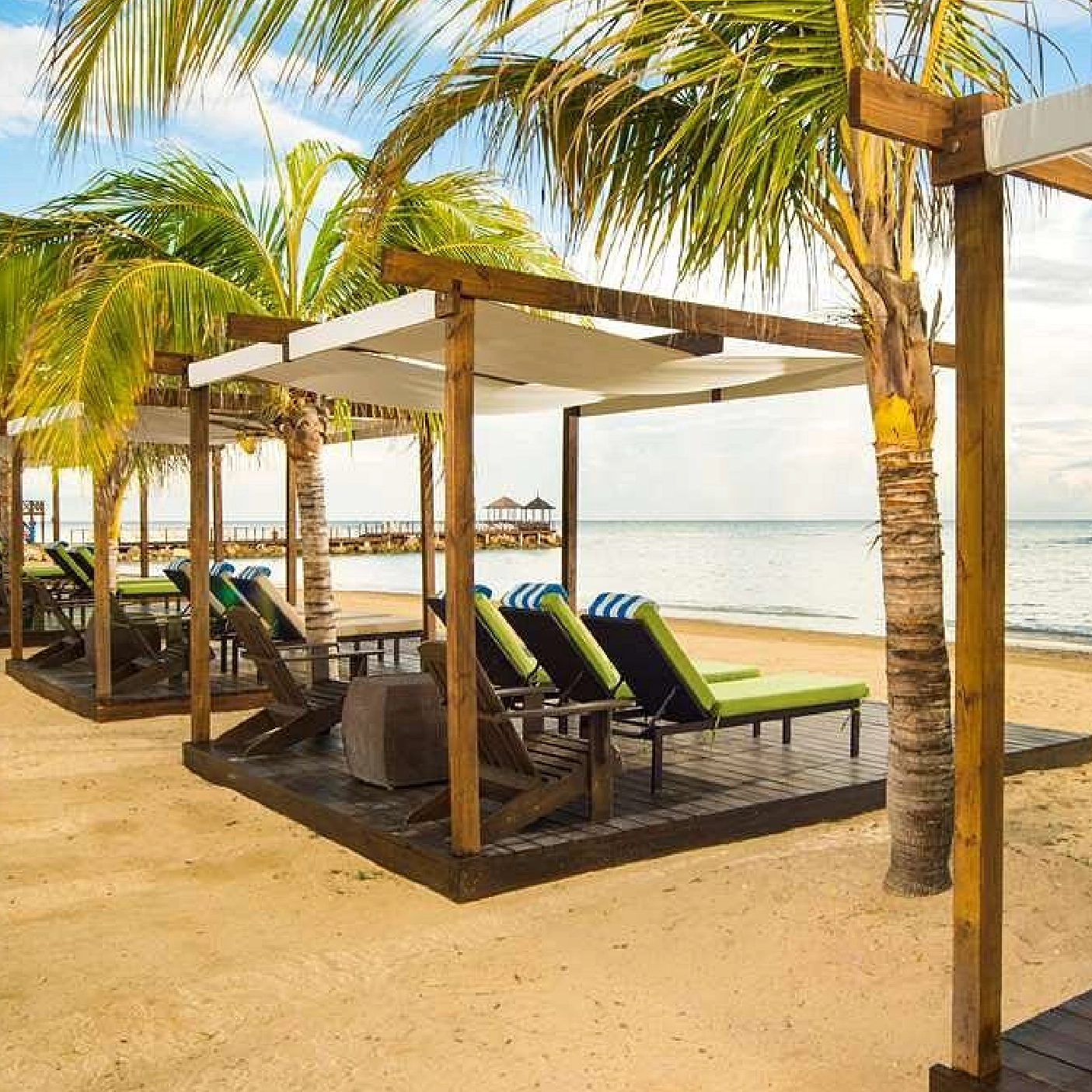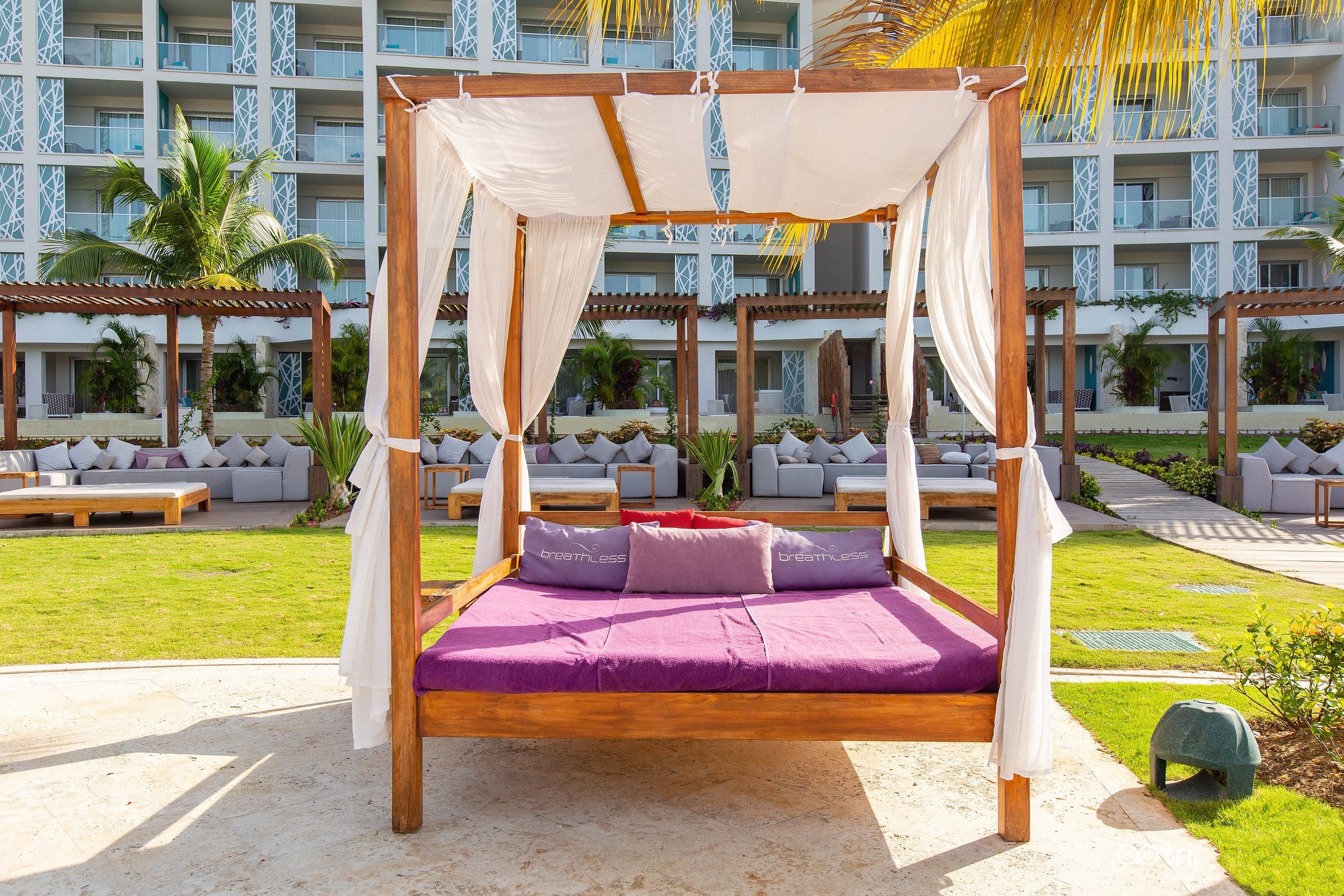Views: 0 Author: Site Editor Publish Time: 2025-06-06 Origin: Site








An outdoor cabana is a small, standalone structure designed to provide shade, comfort, and privacy in outdoor settings. They are commonly used by the poolside, at the beach, or in private gardens. Cabanas serve as the perfect retreat for relaxation and entertainment, offering a cozy space for sunbathing, reading, or socializing while being protected from the sun's rays. Whether at a resort or in your backyard, they bring a sense of luxury and functionality.
The term "cabana" comes from the Spanish word "cabaña," which translates to "small hut." Historically, cabanas were simple structures used as changing rooms for beachgoers. Today, they have evolved into luxurious, private outdoor retreats.
Outdoor cabanas are primarily used as shaded spaces for leisure, relaxation, and entertainment. They are commonly found in hotels, resorts, and private homes. Cabanas are versatile spaces for sunbathing, hosting social gatherings, or simply enjoying nature in a comfortable, secluded area.
Cabanas originated in the 19th century as small, portable shelters designed for beachgoers. Initially, they were simple tents or wooden structures used as changing rooms along the coastline. Over time, they became a symbol of luxury and relaxation in tropical and resort settings.
Cabanas gained popularity with the rise of poolside resorts in the mid-20th century. The growing demand for exclusive, private spaces in public areas such as beaches and resorts made cabanas an essential part of luxury outdoor experiences.
There are several types of cabanas, including:
Poolside Cabanas: Located around swimming pools, offering shade and comfort.
Beach Cabanas: Found on the beach, providing protection from the sun and privacy.

Garden Cabanas: Installed in residential gardens for relaxation and outdoor entertainment.
Commercial cabanas are typically larger and designed for public use, often found in hotels and resorts. They may offer additional amenities like air conditioning or televisions. Residential cabanas, on the other hand, are designed for private use and may be smaller, more customizable, and reflect personal taste.
Key features of a quality outdoor cabana include:
A durable roof to provide shade and shelter.
Open sides to ensure ventilation and airflow.
Walls for privacy, often with curtains or screens.
Sturdy structure to withstand various weather conditions.
Cabanas can be made from a variety of materials, including:
Wood: A traditional choice that offers a natural look.
Metal: Durable and modern, offering a sleek design.
Thatch: Common for tropical settings, providing a rustic aesthetic.
Textiles: Used for curtains or drapes, allowing for flexible privacy and design.
When building a cabana, consider materials that suit your environment:
Wood is ideal for a classic look but requires regular maintenance.
Metal is a modern, low-maintenance option.
Plastic is cost-effective and durable but may lack the charm of other materials. Choose materials based on your location, climate, and desired aesthetic.
The cost of building a cabana depends on the materials used, the size of the structure, and any customizations. On average, a basic cabana can cost anywhere from $1,500 to $10,000 or more, depending on your choices.
Building a cabana may require permits depending on local zoning laws. For residential properties, it’s essential to check with your municipality about whether a permit is needed. Commercial properties may require additional regulations to ensure public safety.
Cabanas provide numerous benefits:
Shade: They offer protection from the sun, making outdoor spaces more comfortable.
Increased Property Value: Adding a cabana to your outdoor space can enhance the appeal and value of your property.
Space for Socializing: They create a designated area for family gatherings, parties, or relaxation.
Aesthetic Appeal: Cabanas can enhance the beauty of your garden, pool, or beachside environment.
A cabana serves as an excellent spot for hosting outdoor events such as pool parties, barbecues, or family gatherings. It provides a comfortable, shaded space for guests to relax and socialize, adding a touch of luxury to any occasion.

Design ideas for cabanas range from modern minimalism to rustic charm. Consider using:
Neutral tones for a sophisticated look.
Natural materials like wood and wicker for a beachy, tropical vibe.
Retractable awnings for versatility in adjusting shade.
Add comfort and style with:
Comfortable seating like lounge chairs or daybeds.
Privacy curtains to shield from wind or prying eyes.
LED lighting to create a relaxing ambiance.
Smart additions like speakers, TVs, or outdoor heaters.
Consider the size of your outdoor area, the climate, and the primary use of the cabana. For example:
For smaller spaces, a compact, minimalist design works best.
For larger areas, a spacious, well-equipped cabana is ideal for hosting gatherings.
When buying a cabana, take into account:
Weather conditions: Choose weather-resistant materials for harsh climates.
Maintenance: Consider the upkeep required for different materials.
Purpose: Determine if it’s for personal use, entertaining, or commercial purposes.
Regular cleaning is essential to keep your cabana looking great. Protect materials from harsh weather by applying coatings and ensuring the structure is secure. Inspect for any damage and repair it immediately to prevent further deterioration.
The lifespan of a cabana depends on its materials and the level of care it receives. A well-maintained wooden cabana can last 10–15 years, while metal or plastic cabanas may last longer with minimal maintenance.
Whether you're looking to relax by the pool, entertain guests, or create a private outdoor retreat, a cabana is a fantastic addition to your outdoor space. Its benefits, including shade, privacy, and aesthetic appeal, make it a worthy investment for any homeowner or business. Choose the right design, materials, and features to suit your needs and enjoy your own personal oasis!
A: When selecting materials for your cabana, consider the environment and climate. For a classic, natural look, wood is a great choice, though it requires regular maintenance. Metal is durable and low-maintenance, ideal for modern aesthetics. Plastic is a cost-effective, durable option but may lack charm. Choose materials based on your location, aesthetic preferences, and climate conditions.
A: The cost of building a cabana depends on its size, materials, and any custom features. On average, a basic cabana can cost between $1,500 to $10,000 or more. Factors like added amenities (e.g., air conditioning or TVs) can increase the price. It’s essential to plan your budget based on the type and purpose of the cabana.
A: In most cases, building a cabana requires a permit, especially for residential properties. You should check with your local municipality to determine zoning laws and whether a permit is needed for your specific location. Commercial properties may have additional requirements to ensure safety and compliance with building codes.